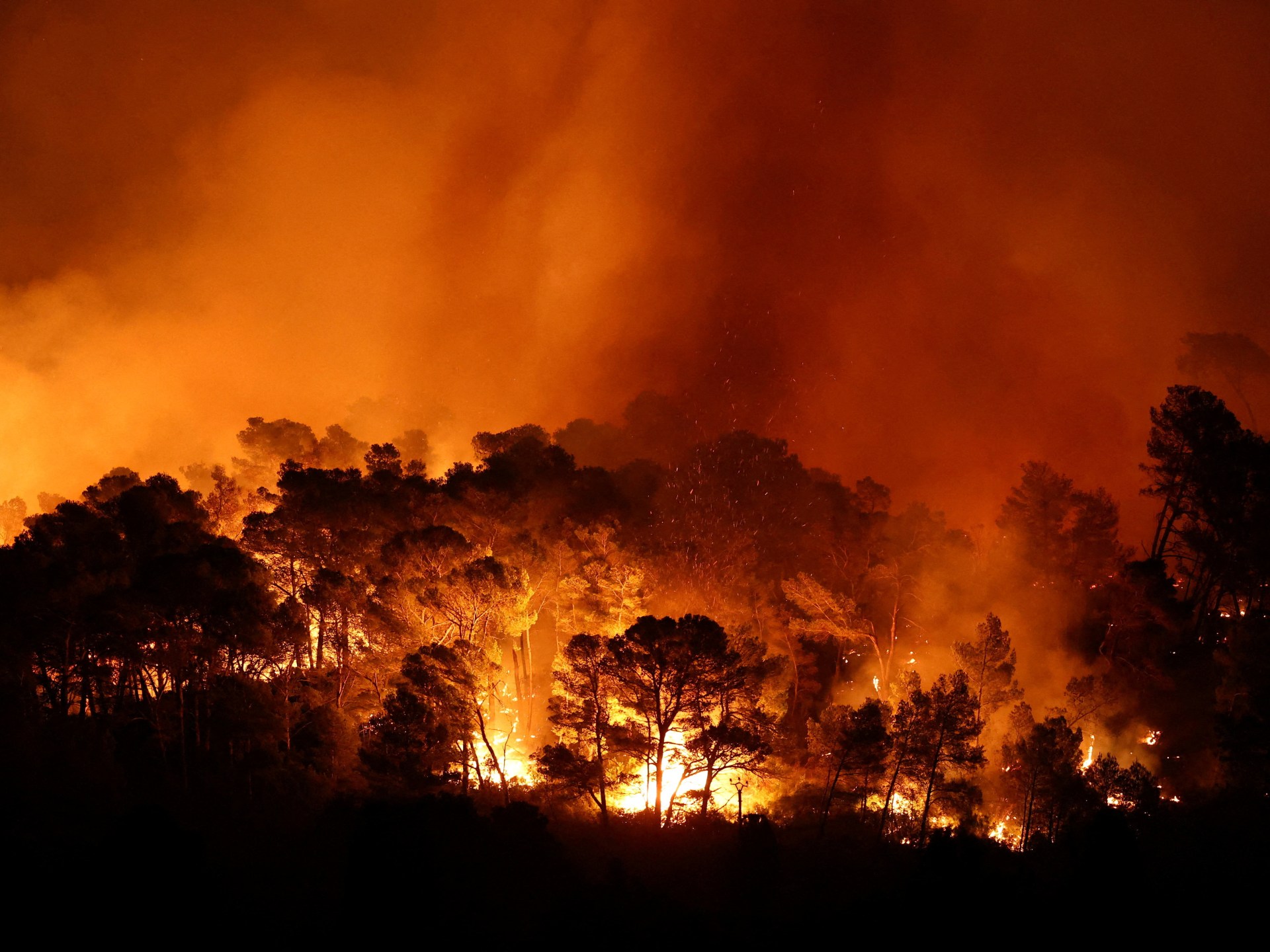Published On 22/10/2025
|
Last update: 11:10 (Mecca time)
Forest fires are becoming more frequent, larger and more destructive around the world, and climate change has been identified as a major cause, as drought and excess heat make forests susceptible to rapid flammability.
The second annual Bushfire Situation Report, published by researchers at the University of Melbourne this week, reveals that from March 2024 to February 2025, 3.7 million square kilometers and 100 million people were affected by bushfires worldwide.
Read also
list of 4 itemsend of list
This equates to an area larger than India, and also puts facilities and infrastructure worth 183 billion euros (about 212 billion dollars) at risk.
The report confirms that climate change is not only creating more dangerous and fire-prone weather, but is also affecting how plants grow and dry, providing more fuel for fires.
In South America, the Pantanal/Chiquitano region of Brazil saw fires 35 times larger than what would have occurred in a world without human-induced global warming, according to the report.
“The deadly bushfires in Los Angeles last January were twice as likely to start, and burned 25 times more area than they would in a world without human-induced global warming,” says report co-author Hamish Clarke from the University of Melbourne.
Only a few parts of the world have been spared the increasing fire damage. In Australia, more than a thousand major fires destroyed an area of approximately 470,000 hectares in the west of the country, while more than 5 million hectares burned in its center.
Record fires have also destroyed parts of the Amazon and Congo forests, releasing billions of tons of carbon dioxide.
The Amazon region alone witnessed the “most devastating” fire season in more than two decades, despite the slowdown in deforestation. Last year’s forest fires affected 3.3 million hectares in the region.
It also released an amount of carbon dioxide equivalent to that of an entire country, according to a recent study conducted by the European Commission’s Joint Research Center.
Europe has not been spared this trend: by July 2025, heatwaves, droughts and poor forest management have burned 292,000 hectares of land, while southern Europe, in particular, faces increasingly intense fire seasons.
The consequences of fires caused by climate change go beyond the immediate devastation they cause, as they transform trees and forest areas from a sink of carbon into a source of emissions.
In the study, researchers analyzed 49 years of data from 20 sites and found that carbon release occurs because trees die and decompose faster than they can be replaced.
Researchers attribute this change to dry air and high temperatures. They explained that these conditions imposed unprecedented pressure on the tree trunks and branches, and not on their roots. This has undermined its ability to store greenhouse gases.
Scientists warn that protecting and restoring these ecosystems is now more urgent than ever, as the combination of hotter conditions, prolonged drought and flammable vegetation threatens biodiversity and the planet’s ability to absorb carbon.

